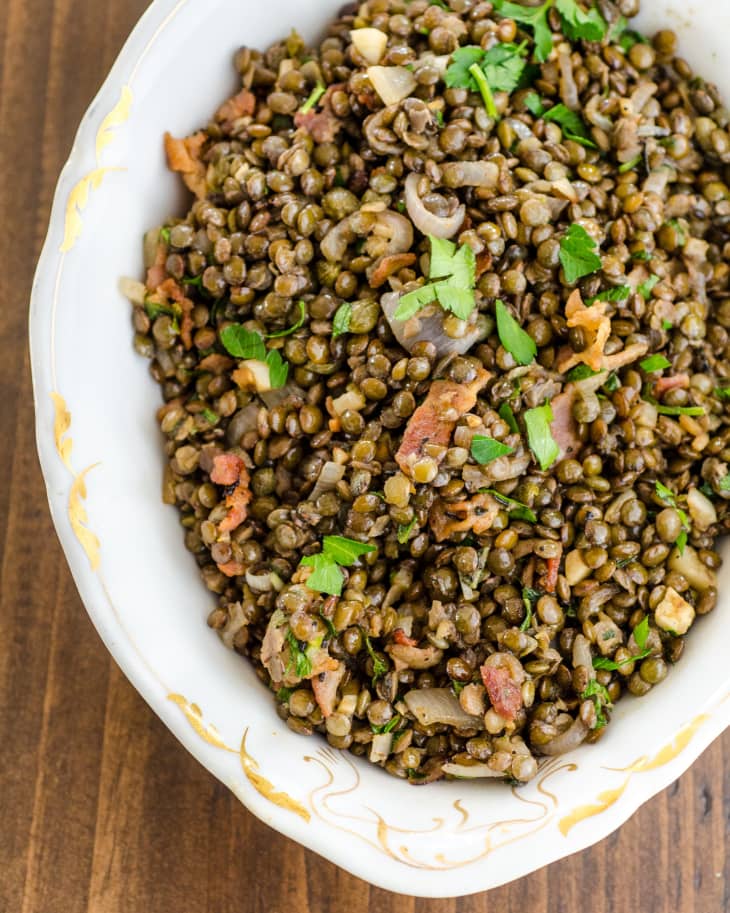What’s So Special About French Lentils?
Skim a recipe with lentils in the title and you may find it specifically calls for the French variety. Are you wondering, like I have for all my lentil-eating years, why they are specifically called out? Brown or green lentils are a whole lot cheaper at the grocery store, so wouldn’t those work just fine? The truth is that there is actually a difference between French lentils and the other guys — and depending on the recipe, the difference really matters.
The Difference Between French Lentils and All the Rest
French lentils are a variety of green lentils. What sets them apart from standard green lentils is their slightly darker hue and smaller size — they’re about one third the size of standard green lentils. They are special because they hold their shape extremely well — better than pretty much any other type of lentils — so they are the ideal contender for salads as well as light soups, when you’d rather the lentils in the pot not turn to mush. Their flavor is also slightly different than other types; it’s a bit nutty and peppery, with a slight mineral-like, earthy flavor.
What About Puy Lentils?
Puy lentils, or lentilles du Puy, are French lentils that have been grown in the Puy region of central France. The variety is the same, but since they are grown in this distinct place (which has volcanic soil) the taste is slightly different — it’s even more peppery and flinty. If your bag of French lentils aren’t noted as Puy, then they were grown outside of this famous region, likely in North America or Italy. Regardless, both deliver the firm texture and nutty flavor this variety is known for.
